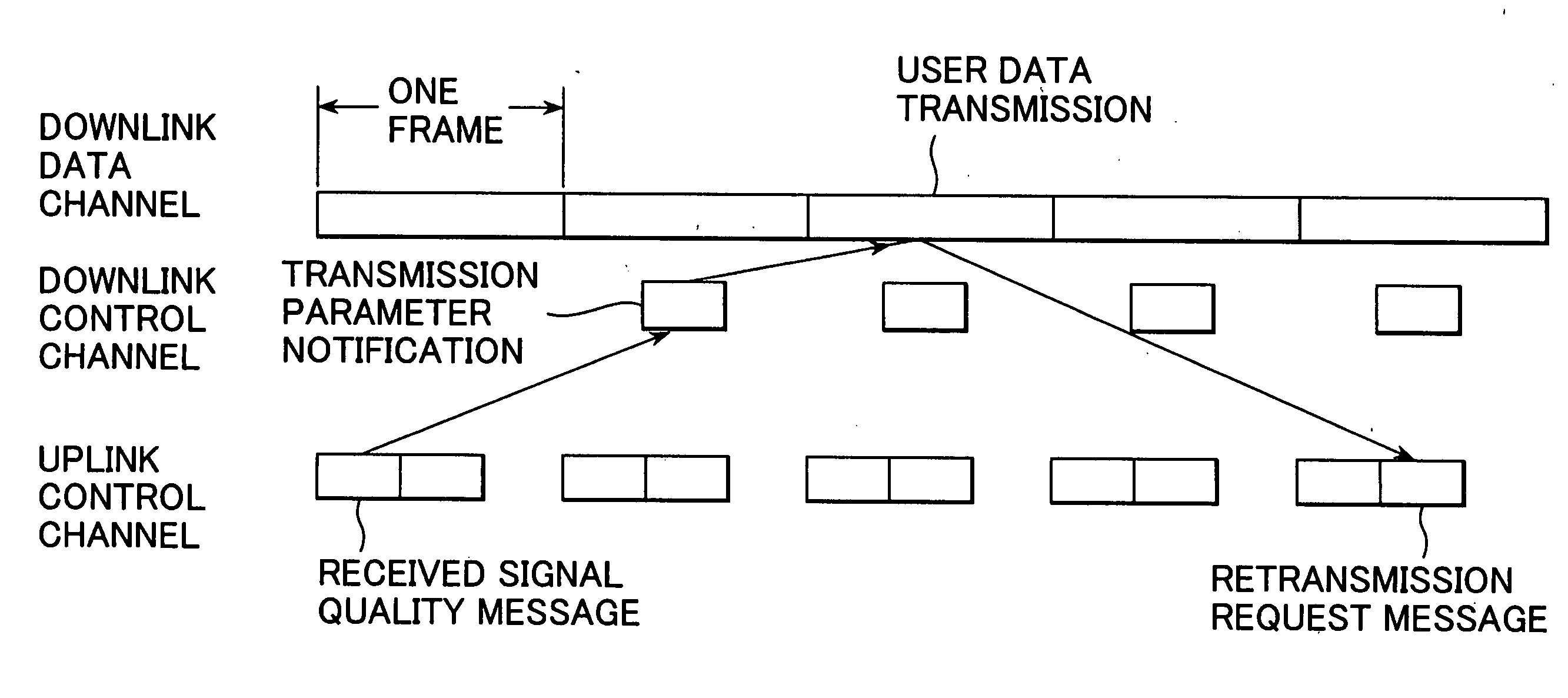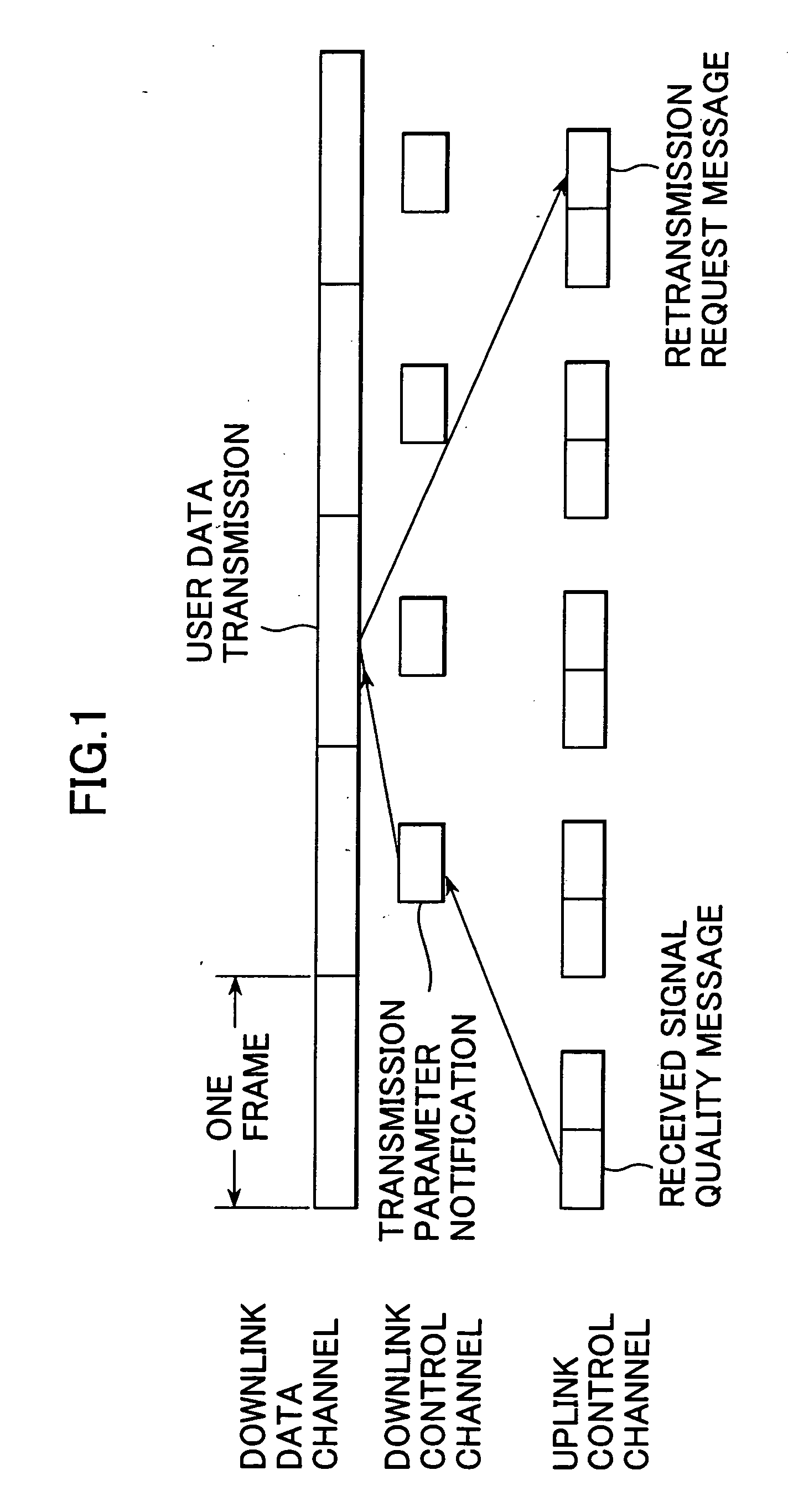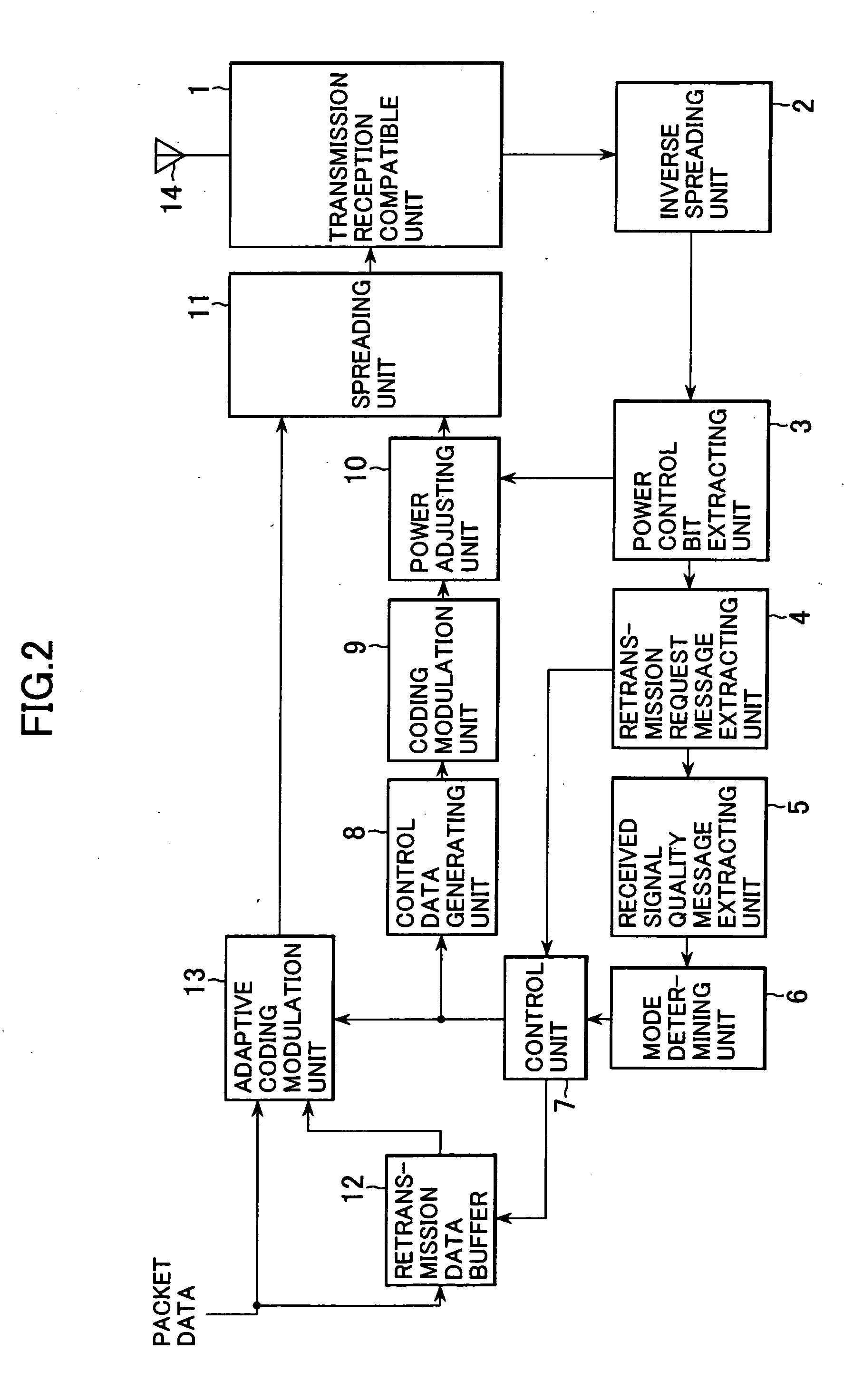Transmitter and transmission control method
a transmission control and transmitter technology, applied in the direction of transmission monitoring, frequency-division multiplex, wireless commuication services, etc., can solve the problems of deterioration of noise characteristics, inferior error correction capability, and deterioration of propagation paths at data retransmission time, so as to suppress useless radio communication resources and improve transmission efficiency
- Summary
- Abstract
- Description
- Claims
- Application Information
AI Technical Summary
Benefits of technology
Problems solved by technology
Method used
Image
Examples
second embodiment
[0202]FIG. 12 is a flowchart for illustrating the retransmission carried out at step S20 shown in FIG. 10.
[0203] In the embodiment of FIG. 11, the terminal accumulates the received signal quality information upon respective data transmission operations of from the first user data transmission (the initial user data transmission) to the previous user data retransmission, whereby estimation is made on the received signal quality upon synthesizing the data of retransmission and the user data received in the previous step. In the embodiment of FIG. 12, the received signal quality upon transmitting the data in the first time is directly utilized as an estimated value of the received signal quality at the terminal.
[0204] In the embodiment of FIG. 11, at step S40, the previous received signal quality Qprv is updated by calculating the equation Qprv=Qprv+Qnow+Pup. Alternatively, at step S47, the previous received signal quality is updated by calculating the equation Qprv=Qprv+Qnow. However...
third embodiment
[0211] Next, FIG. 13 is a flowchart showing the retransmission carried out at step S20 of FIG. 10.
[0212] While in the embodiments of FIGS. 11 and 12 control is made on the transmission power of the downlink data channel of the transmission parameter upon retrying transmission based on the received signal quality Qprv−Qnow, in the embodiment of FIG. 13, control is made on the transmission mode of the transmission parameter upon retrying transmission based on the received signal quality difference Qprv−Qnow.
[0213] In the embodiment of FIG. 13, processing is carried out from step S91 to S93 in a manner similar to those carried out in steps from S31 to S33.
[0214] At step S93 corresponding to step S33, if it is determined that the received signal quality difference Qprv−Qnow is larger than the threshold value THx and hence the current received signal quality Qnow is deteriorated relative to the previous received signal quality Qprv, the mode determining unit 111 supplies information in...
fourth embodiment
[0237]FIG. 14 is a flowchart showing the retransmission processing at step S20 of FIG. 10.
[0238] In the embodiments of FIGS. 11 and 12 the transmission power upon retransmitting data is controlled based on the received signal quality Qprv−Qnow, and in the embodiment of FIG. 13 the transmission mode upon retransmitting data is controlled based on the received signal quality Qprv−Qnow. However, in the embodiment of FIG. 14 both of the transmission power upon retransmitting data and the transmission mode upon retransmitting data can be controlled based on the received signal quality Qprv−Qnow.
[0239] Now the retransmission processing of FIGS. 11 and 12 is referred to as retransmission at a changed transmission power and the retransmission processing of FIG. 13 is referred to as retransmission at a changed transmission mode. In the embodiment of FIG. 14, initially, at step S111, the control unit 112 examines whether the base station can afford to allocate additional resources or not.
[0...
PUM
 Login to View More
Login to View More Abstract
Description
Claims
Application Information
 Login to View More
Login to View More - R&D
- Intellectual Property
- Life Sciences
- Materials
- Tech Scout
- Unparalleled Data Quality
- Higher Quality Content
- 60% Fewer Hallucinations
Browse by: Latest US Patents, China's latest patents, Technical Efficacy Thesaurus, Application Domain, Technology Topic, Popular Technical Reports.
© 2025 PatSnap. All rights reserved.Legal|Privacy policy|Modern Slavery Act Transparency Statement|Sitemap|About US| Contact US: help@patsnap.com



